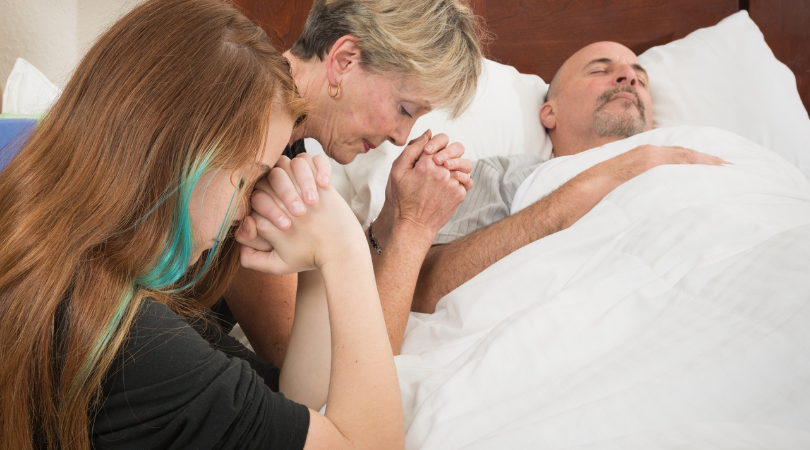Partnering with Hospice for a Ventilator Withdrawal

A ventilator is a life-support machine that breathes for someone who is unable to breathe adequately on their own. For some patients, this works well as a temporary assist until they recover and can breathe on their own. But for terminally ill patients, there will come a time when the patient and/or their family must think about a ventilator withdrawal.
The goal of a ventilator withdrawal is to allow the disease to continue its natural course, without hastening death or prolonging life. Partnering with a hospice team for an end-of-life ventilator withdrawal can ease pain and discomfort for the patient, while providing the family with emotional and spiritual support.
One Family’s Story
Lorria Lewis, a hospital liaison with Crossroads Hospice & Palliative Care, recently participated in a ventilator withdrawal for a patient with a long history of hospitalization for COPD. We’ll call that patient Susan*. Over the past ten years, Susan had several health scares that led to intubation and resuscitation, and she had decided she no longer wished to have this life-sustaining care. But in a moment of crisis, she was given a tracheotomy and placed on a ventilator. When she awoke, she made it very clear that she wanted to be weaned from the ventilator and allowed to return home.
Lorria met with Susan, her spouse, and the hospital unit case manager to discuss the patient’s goals. All agreed to honor her wishes to discharge her home in time for her birthday two days later.
“It was a family choice that was affecting everyone, but they were all on the same page,” says Lorria.
“My job usually is to get the patient home and get things set up in the home, but I volunteered to be her continual care nurse to get her through it,” she shares. “I was able to get to know her personally and get to know why she was making her choice.”
Susan returned home on her birthday with the agreement that her team would begin the ventilator wean 72 hours later.
Over the course of those 72 hours, the patient’s family was able to visit with her, and her hospice team was able to help prepare them for the ventilator withdrawal process.
“Once we start, it does not mean [the patient] will pass immediately,” Lorria explained, “I told them that we would be there for them no matter what, but we were unable to predict what the future would be for the situation. We had to take it hour by hour, day by day.”
On the day of the ventilator wean, Susan was calm and relaxed through the entire process. The family sat bedside for the first four hours and the patient remained alert. Over time, susan gradually fell into a deep sleep and was no longer responsive. Her respirations remained steady until early the next morning. The Crossroads team continued to provide support until she passed away later that evening.
“This was a huge decision for the patient,” says Lorria. “She was able to be in control of it and her entire family was able to be there with her.”

Honoring Patient Wishes
Even when they would prefer a natural death, patients can end up on life support forcing them or their family to make a difficult choice to discontinue that support. After an end-of-life ventilator withdrawal, the patient may live for a few minutes to several days or weeks. Crossroads supports the patient and their family through this.
To learn more about our ventilator withdrawal partnerships and other hospice care programs, please call 1-888-564-3405.
*patient name has been changed
If you found this information helpful, please share it with your network and community.
Copyright © 2021 Crossroads Hospice & Palliative Care. All rights reserved.




